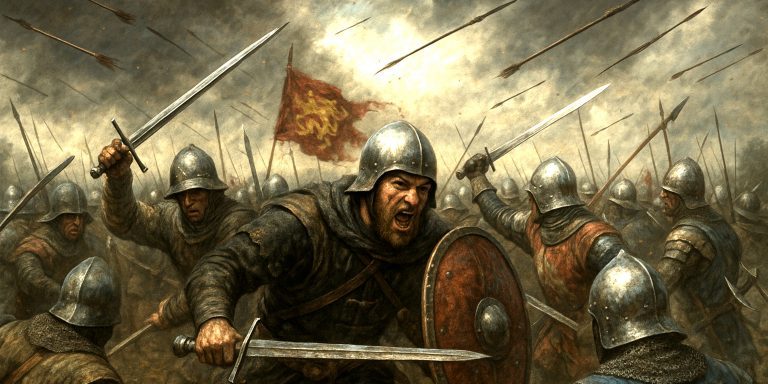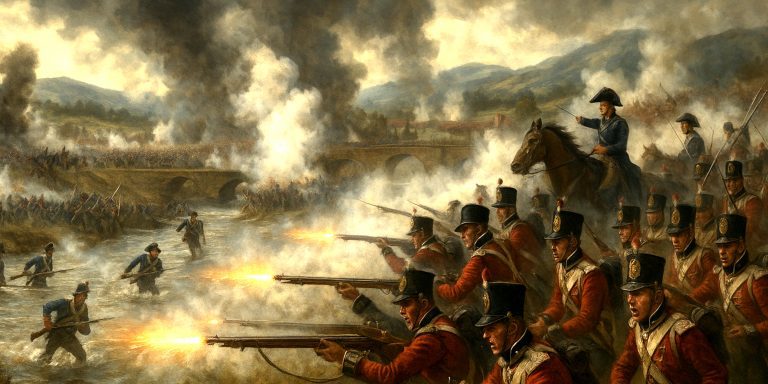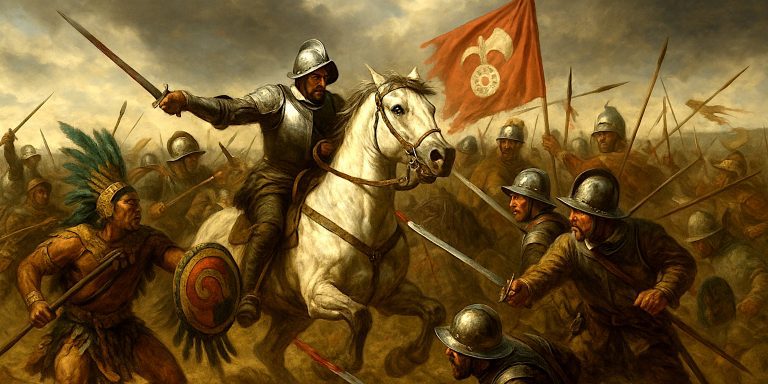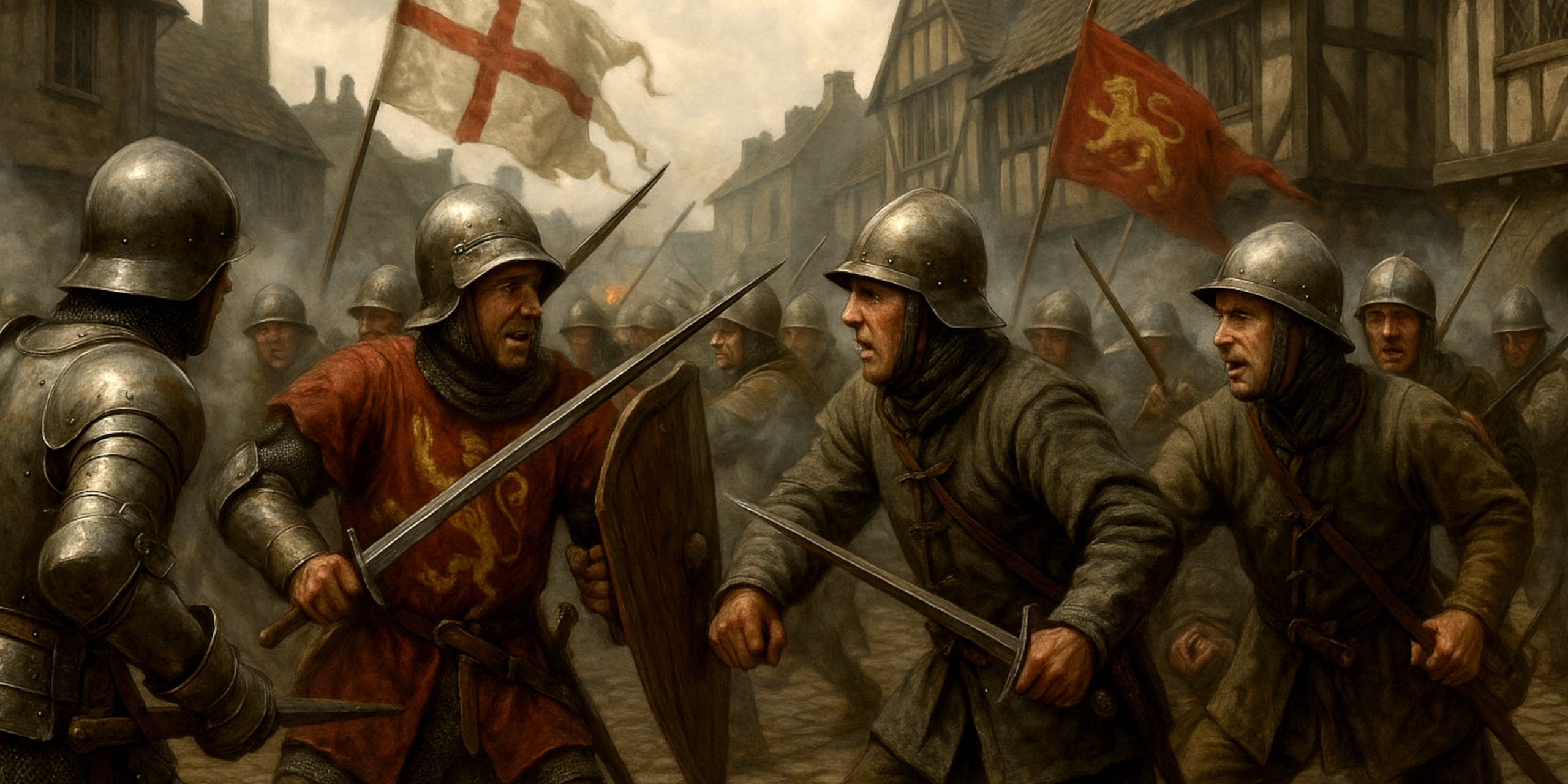
The First Battle of St Albans marked the violent beginning of the Wars of the Roses, a dynastic struggle between the rival houses of York and Lancaster. Fought on 22 May 1455 in the Hertfordshire market town of St Albans, the battle was short but decisive. It saw the Duke of York challenge the authority of King Henry VI and assert his own influence over the government. Though small in scale, the battle shattered any illusion of peace between the two factions.
Background
By 1455, England was politically unstable. King Henry VI suffered recurring bouts of mental illness, and his queen, Margaret of Anjou, had become increasingly active in politics. Richard, Duke of York, once Lord Protector during the king’s incapacity, had been marginalised by the court faction loyal to the House of Lancaster. Tensions over governance, foreign policy, and noble rivalries spiralled into open conflict.
York gathered support from powerful nobles, including Richard Neville, Earl of Warwick. Meanwhile, Henry VI, now recovered, aligned with Edmund Beaufort, Duke of Somerset, a long-time enemy of York. When attempts at reconciliation failed, both sides mustered forces.
Forces
| Faction | Commander(s) | Estimated Troops |
|---|---|---|
| House of York | Richard, Duke of York | c. 3,000 |
| Richard Neville, Earl of Warwick | ||
| Edward, Earl of March | ||
| House of Lancaster | King Henry VI | c. 2,000 |
| Edmund Beaufort, Duke of Somerset | ||
| Henry Percy, Earl of Northumberland | ||
| Lord Clifford |
Arms and Armour
Yorkist Forces:
- Armoured men-at-arms with plate harness and visored sallets
- Longbowmen drawn from retainers and rural levies
- Billmen equipped with polearms such as bills, glaives, and halberds
Lancastrian Forces:
- Similar composition: plate-armoured nobles, longbowmen, and infantry levies
- Defensive positions included barriers in the town centre and at key entrances
- Some urban structures fortified to act as strongpoints
The Battle
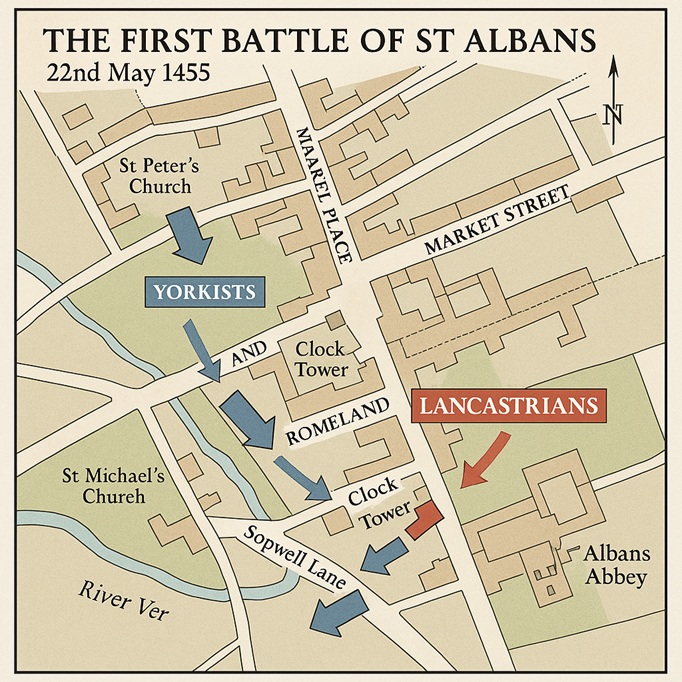
York’s army approached St Albans from the east and found the Lancastrians barricaded in the narrow streets. Initial attempts to break through failed. After several hours of inconclusive fighting, Warwick led a flanking manoeuvre through unguarded gardens and back lanes, entering the town from the north.
Once inside, Yorkist troops caught the defenders by surprise. Fighting broke out in the market square and surrounding streets. The battle lasted less than two hours but was bloody and chaotic. The Duke of Somerset was killed in the melee, along with Northumberland and Lord Clifford.
King Henry VI was lightly wounded by an arrow and found sheltering in a tanner’s house. He was captured by York’s men and treated with respect, but the message was clear: the Yorkists had taken control of the kingdom’s military and political destiny.
Archaeology
St Albans has undergone extensive modern development, but some finds linked to the 1455 battle have surfaced:
- Arrowheads and buckles unearthed near the market square
- Possible impact marks on structures around St Peter’s Street
- Excavations suggest a concentration of fighting around the Clock Tower and fish market area
Despite urban expansion, the town’s medieval street layout remains largely intact, aiding historical reconstruction of the battle’s course.
Battle Timeline
Early Morning:
Yorkist forces arrive near St Albans and attempt negotiation. Demands for Somerset’s arrest are rejected.
Midday:
York orders an attack on the Lancastrian barricades. Initial assaults on the town centre are repelled.
Early Afternoon:
Warwick’s men discover an unguarded route through gardens and back alleys. They enter from the north and take defenders by surprise.
Shortly After:
Street fighting erupts. Key Lancastrian nobles are killed. King Henry VI is wounded and captured.
Late Afternoon:
Yorkists assume control of St Albans. The king is treated with courtesy but taken into custody. York reasserts his claim to the role of Protector.
Contemporary Quotes
“The said Duke of Somerset was slain and with him many others… and the King was wounded in the neck with an arrow.”
— Chronicle of the Rebellion in Lincolnshire (1469)
“The King’s person was taken and led with great reverence, but Somerset was not so fortunate.”
— John Benet’s Chronicle
Legacy
The First Battle of St Albans did not resolve the conflict. Instead, it revealed the fragility of royal authority and emboldened the House of York. Though the Yorkists professed loyalty to the king, the execution-style deaths of Somerset and others suggested political vengeance disguised as justice.
This early victory gave Warwick the reputation of a military commander and earned him the moniker “Kingmaker.” It also set the tone for what would become a generation of intermittent civil war, driven by ambition, mistrust, and the shifting loyalties of England’s great families.
Watch the documentary:

